
SEO can help enhance your business’s visibility on search engines like Google. But to ensure good SEO, you need to understand search intent. Search intent describes the purpose of an online search. It answers the “why.” Why did the user perform the search in the first place?
Understanding search intent will allow you to create content that satisfies both Google and people searching for products similar to yours. Then you can reach more people at different sales funnel stages and improve conversions.
In SEO, there are four types of search intent:
- Informational search intent: This search is performed when the user looks for specific information, i.e., “where was Napoleon born?”
- Navigational search intent: This search is performed when the user looks for a specific website, i.e., “Facebook.”
- Transactional search intent: This search is performed when the user wants to buy something, i.e., “buy iPhone 14.”
- Commercial search intent: This search is performed when the user wants to look for relevant information before buying, i.e., “iPhone 14 vs. Samsung Galaxy S22.”
Now that you know the basics, let’s talk about how you can use search intent to improve conversions for your eCommerce store.
1. Perform Keyword Research
To make sure that you get traffic that converts, you need to rank for phrases that match the intent of users who want a product or service that’s similar to yours.
So, if you run an eCommerce store, you should focus on keywords with commercial search intent. That makes sense because people who want to buy something typically perform their research on possible products or services to purchase first. You want your brand to appear in front of the user when that happens. So you need content that’s likely to appear when they perform the search.
If you sell shoes in your store, you might want to create content comparing your product with another. Or you might want to write a shoe review, for example. We’ll talk more about content creation later.
But creating content that aligns with the user’s search intent isn’t enough. You also need to determine what keywords to use in your content to increase your chances of appearing in search engine results pages when users make a search query.
A keyword research tool can give you a list of these terms and phrases. However, you should validate this list to ensure you can and should rank for these keywords. Look at the keyword difficulty to determine if you can rank for them in the first place. After all, you don’t want your SEO efforts to be in vain.
There are many ways to determine keyword difficulty. Typically, the most reliable way to measure this is to look at domain strength, authority, on-page optimization, and search intent of the query as a whole.
Let’s imagine that you own an online store that sells skincare products. In your keyword research, you find out that you should aim to rank for the term “face serum.”
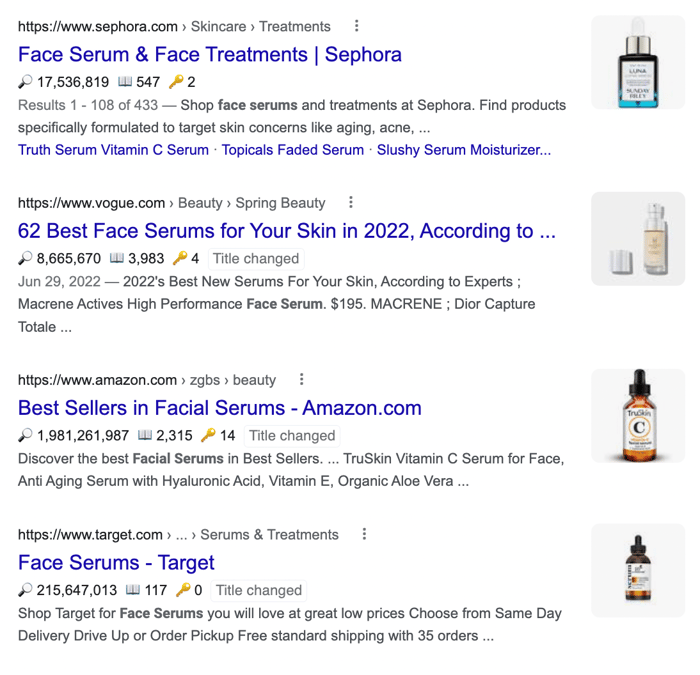
When you search for this query on Google, you see that you’d have to compete with Amazon, Sephora, and other big retailers. Let’s face it. If you’re a relatively new domain, it can be hard to compete with them.
So, what’s your best option? Look for less competitive phrases and aim to rank for them. For example, you can use long-tail keywords that are more descriptive.
You can add words describing your product’s ingredients, for instance, or what it does. So, “brightening face serum” or “face serum with argan oil” are some of the terms you might want to rank for instead.
2. Analyze the SERPs
As you saw in our previous example, it’s worth looking at search engine result pages (SERPs) to find out who your main competitors are for any given search query. But that’s not the only instance you can use SERPs to analyze search intent and boost conversions for your eCommerce store.
Search results can also help you understand the types of content people are looking for so you can create content that answers their questions. So let’s say you’re an eCommerce store selling hiking gear, and you want to rank for the search query “hiking gear.” Perform a quick search to see what’s dominating the SERPs for that query. This is what I get:
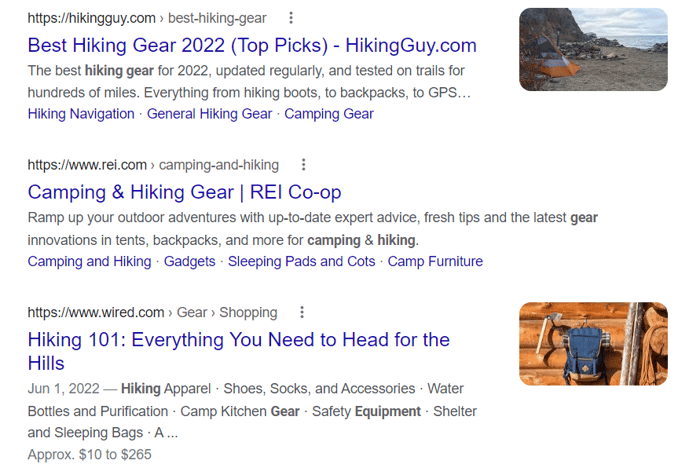
These results above tell you that you need to create content along these lines–hiking essentials, the best hiking gear — if you also want to rank for that same search query.
Don’t forget to look at the People Also Ask section, too. The Google feature can tell you what other topics people are interested in that are related to the topic you first searched for.
So, with our “hiking gear” query, this is what I get on the People Also Ask section:
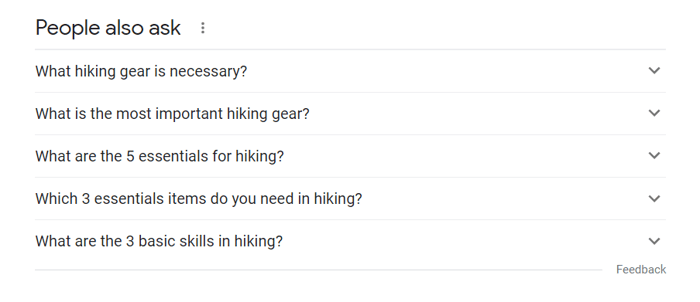
What do these results tell you? People also search for the most important hiking gear and what skills they need to go hiking. In other words, if you want to increase your chances of appearing in SERPs, you should create content that answers these questions.
There’s a third element you should also consider when analyzing SERPs to boost eCommerce site conversions through search intent. That’s the Related Searches section. You usually find that at the bottom of the SERPs:
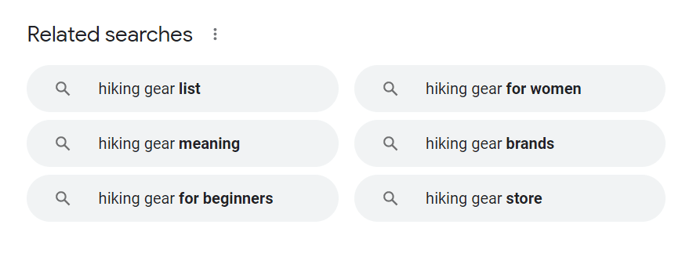
Sometimes, the problem isn’t that you don’t have content that addresses users’ search intent. SERP features like this can help you determine if there’s no such alignment between your existing content and what people are looking for.
Let’s say you’re a cake shop owner trying to rank for the phrase “chocolate cake.” But whatever you do, you can’t seem to get the product review of your cake to rank for that search term. All you have to do is Google “chocolate cake.” Look at the content that dominates the SERPs.

Notice above that cake recipes dominate the SERPs for that search query. This just means that people who search for the term “chocolate cake” aren’t interested in buying a cake. They’re interested in making one.
So, if you want to rank for the search query, you’d need to tweak your existing content to reflect the search intent.
3. Create Content
So far, we’ve looked at how you can determine what people are actually looking for when they make a specific query.
Now that you know what they want, you can start creating content based on the information you found.
As an eCommerce owner, we’ve talked about how you should create content that addresses commercial intent. So, if you’re selling project management software, then you’d want to write an Asana vs. Jira article, for example, or highlight the features of your own project management solution. It’s a given you should also rank for transactional intent queries. After all, these are queries made by users who already want to make a purchase.
That’s not to say you should ignore informational intent queries altogether. Do not underestimate the value of ranking high for these keywords. After all, educational content can also bring you customers, even if converting them takes longer.
That said, when creating content based on your research, don’t just focus on the right topics and keywords. Use the right format, too.
So, if you see that many of the posts ranking for a specific search term use bullet points, use bullet points as well. For instance, a check of the ranking posts for the query “chocolate cake” also shows that the posts follow this format.
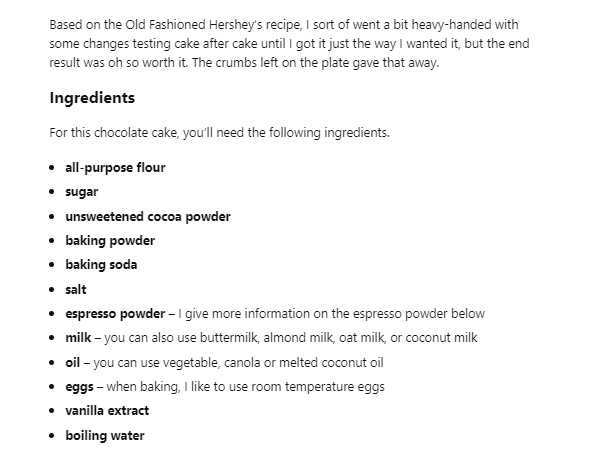
Source: Add a Pinch
Check out the writing style and the article structure, too. Look at the tone as well. Bottom line, just look for the similarities among the articles that rank in SERPs. Then incorporate those into your own article.
This doesn’t mean you’ll just copy what your ranking competitors are doing. You can find gaps, too, and find ways to improve the content. For instance, if your competitors don’t use images in their articles, then use images.
You can also incorporate infographics or videos if you want to. As a general rule, anything that makes it easier for your reader to understand what you’re saying can be incorporated into your article. Just don’t overdo it. You don’t want your article to be too cluttered, either. Aim for fresh, easy-to-read, and quality content.
Don’t forget to optimize blog posts for SEO when the content is ready. Make sure to add internal links for related articles and product pages.
4. Create SEO-Friendly URLs
Search intent can also help you structure your URL to be more SEO-friendly. An SEO-friendly URL, simply put, is one that incorporates descriptive and relevant keywords that show the purpose of the page. So, your research on search intent can come in handy here, too.
But don’t just stuff relevant keywords into your URL to help your website rank higher for those keywords. You need to keep your URL concise. This makes it easy for both search engines and users to remember your URL.
Also, avoid using unnecessary words or strings of numbers and letters, and use hyphens to separate words rather than spaces. For example, a URL for a page about “red shoes” would be better off as “example.com/red-shoes” than “example.com?id=12345.” If you avoid special characters or numbers, you also help ensure Google can index your URL quickly.
5. Perform Other On-Site Optimization Steps
Page optimization based on analyzing search intent is mostly about ensuring your content is relevant to the search intent and giving people what they are looking for FAST.
So, the purpose of a webpage, which, again, should be relevant to the search intent, should be stated in the following:
- Title Tag: This is the title of the page. It’s shown in the title bar and SERPs.
- Page Content: This is the article’s body.
- Alt-text: This describes the function of an image on a page. Optimize the images, too, so they won’t slow down your site.
Also, if you discover that your product page is not getting enough clicks but already ranks in the top 10, you can try checking the differences between your website and the top three ranking competitors.
Ask yourself the following questions. Is their website’s UX/UI more friendly? Does their website load faster? Is their website more mobile-friendly?
Then perform the necessary steps to improve your page and site based on your answers. For instance, if you find that all three websites are more user-friendly than yours, then you can hire a website developer to make changes to your eCommerce site.
In Closing
As you can see, you can do plenty of things to improve your website’s ranking in SERPs based on search intent. By performing on-page optimization, paying attention to top-ranking pages, and using proper keywords, you can create content that is more likely to rank high for relevant queries.
By optimizing your URLs and structure, you can also make it easier for users and search engines alike to find and remember what they are looking for on your website.
Follow these simple tips. You’ll improve your website’s ranking and visibility in SERPs and ultimately drive more conversions to your business. Best of luck!


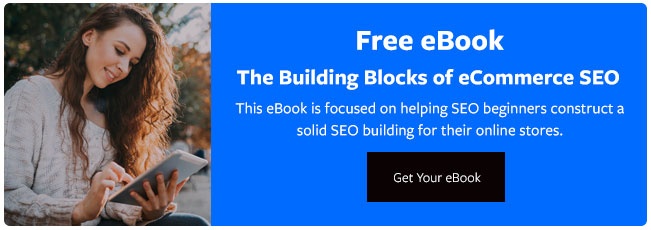


Leave a reply or comment below